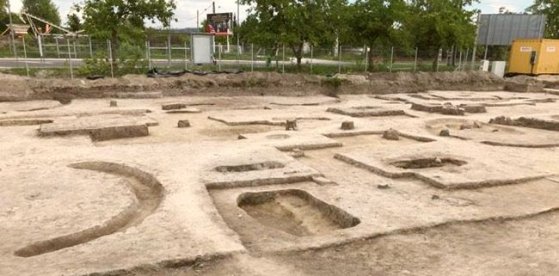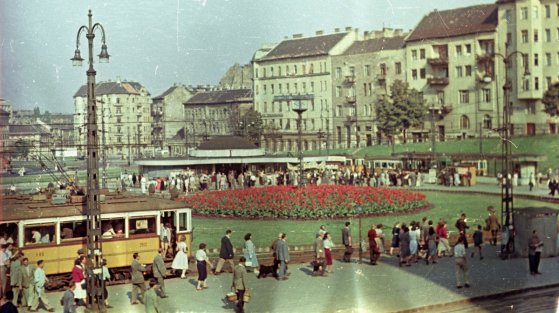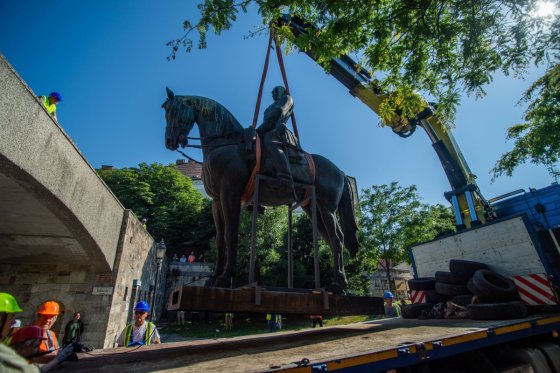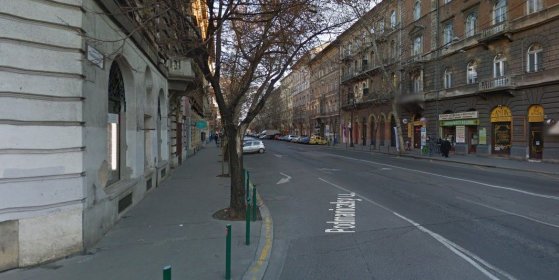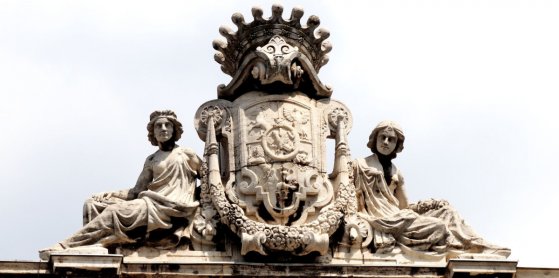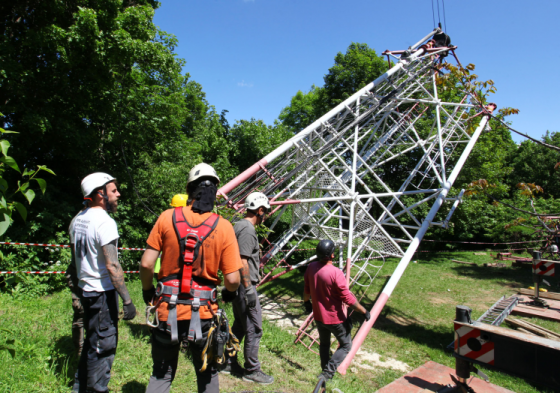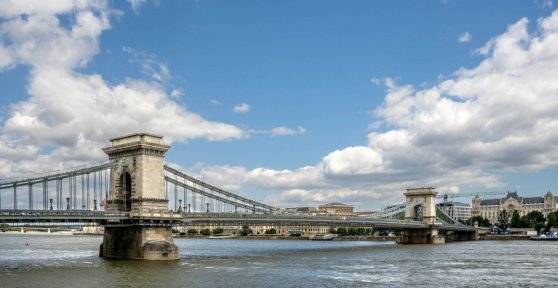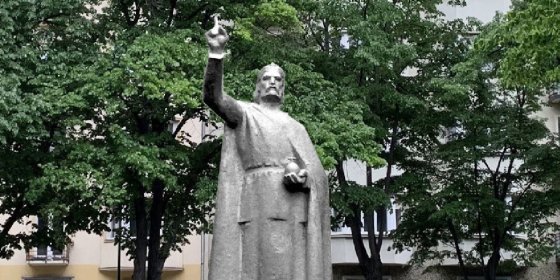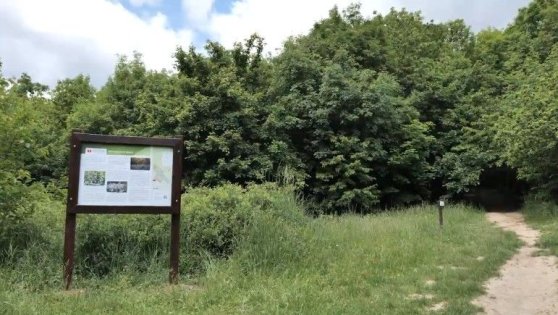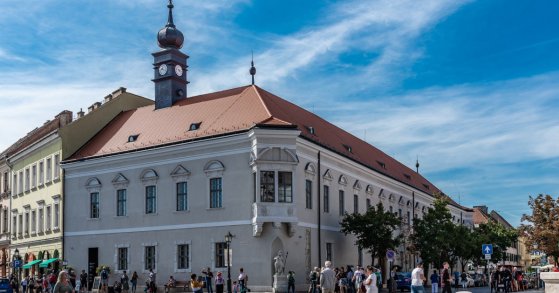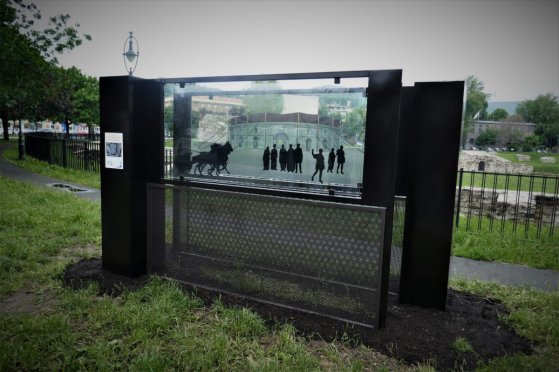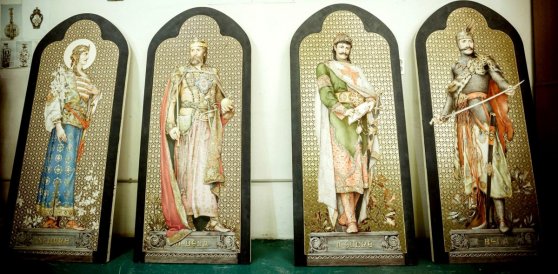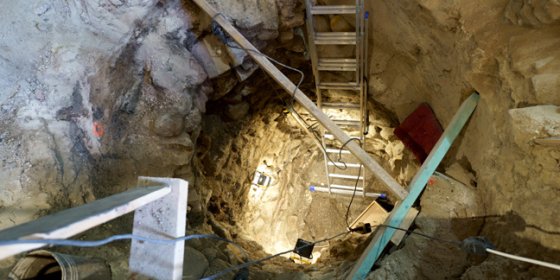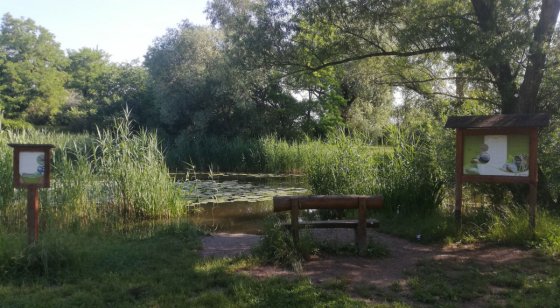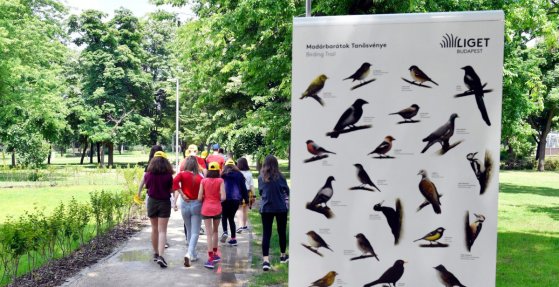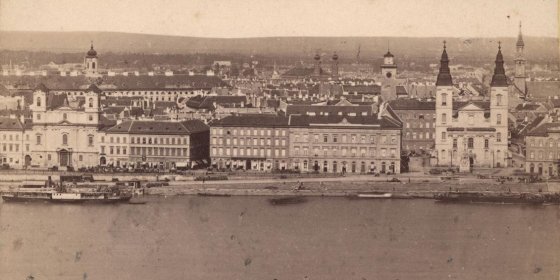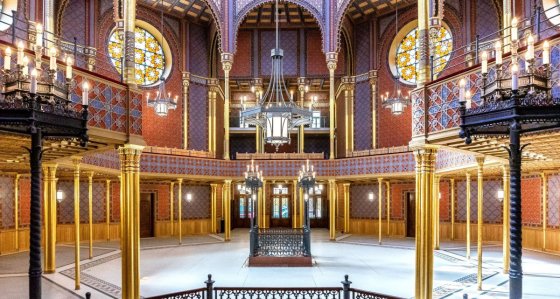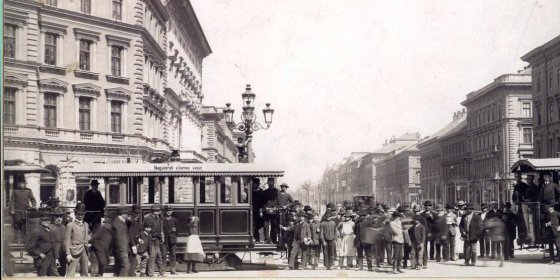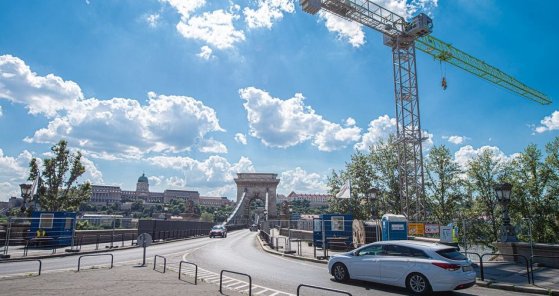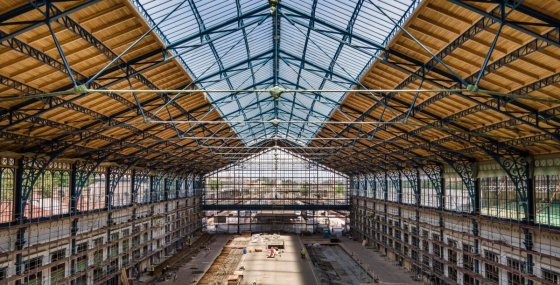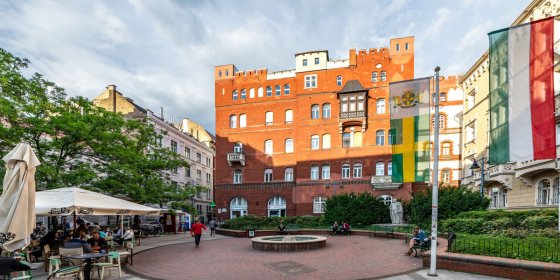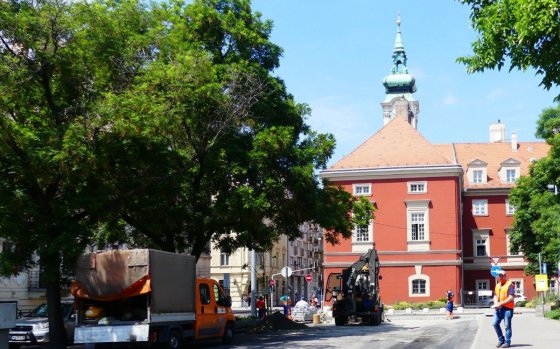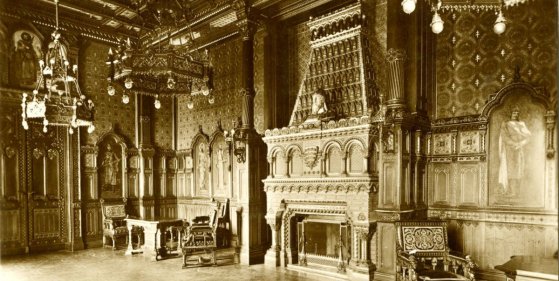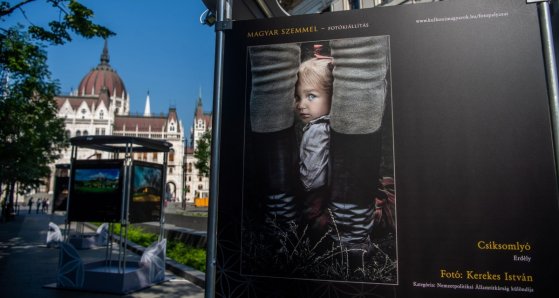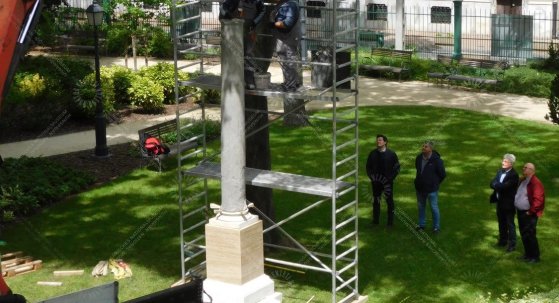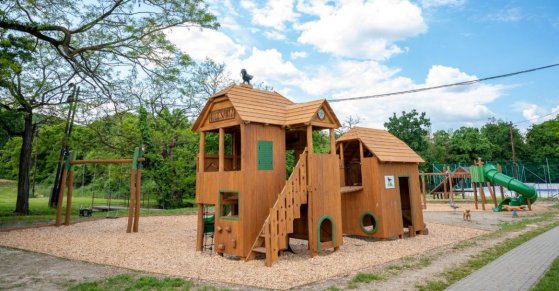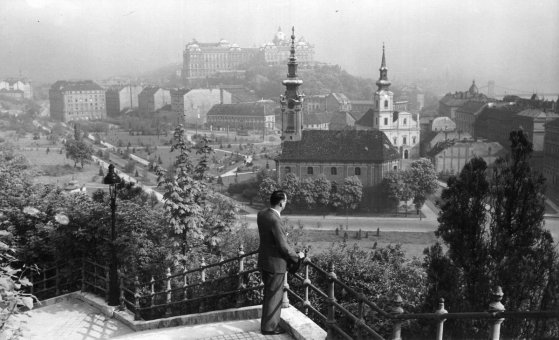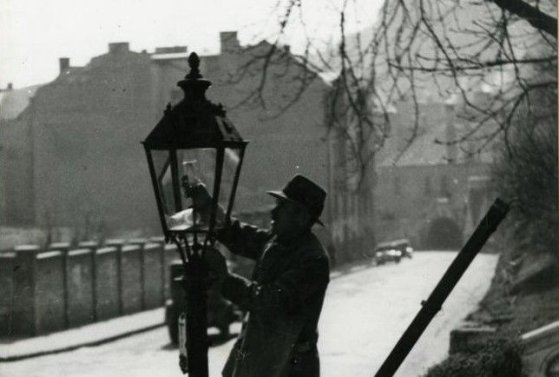 The „intertwined history” of the bridges and the city of Budapest
Which ideas and events have shaped the fate of bridges of Budapest and the cityscape? Alongside many other interesting facts, this question is also answered this newly published book by the Budapest City Archives, which introduces the history of bridges in Budapest.
The „intertwined history” of the bridges and the city of Budapest
Which ideas and events have shaped the fate of bridges of Budapest and the cityscape? Alongside many other interesting facts, this question is also answered this newly published book by the Budapest City Archives, which introduces the history of bridges in Budapest.
pestbuda.hu
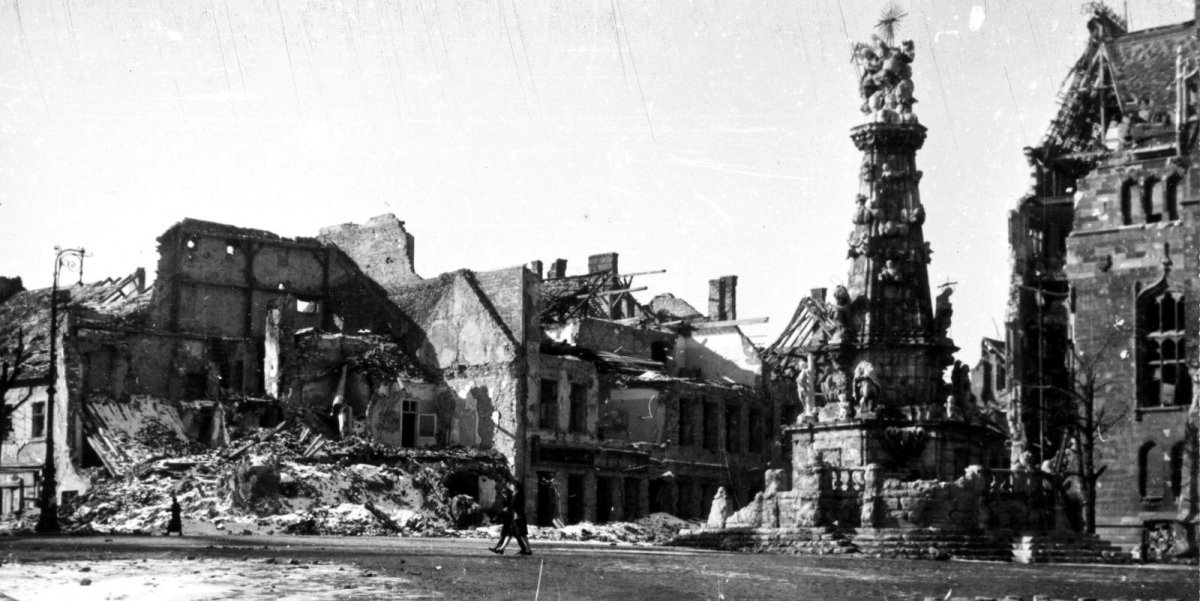 Ideology fuelled destruction in Buda Castle after World War II
Ideology fuelled destruction in Buda Castle after World War II
June 19, 2021 at 8:30 AM
The siege of Budapest was one of the most brutal battles of World War II, with the Castle District suffering the greatest damage. Only 1,400 of the approximately 6,500 flats standing in the vicinity of Castle Hill remained intact. And the devastation continued after the war: the communist dictatorship destroyed many buildings for ideological reasons, even though they could have been saved or rebuilt. Many iconic buildings, including several churches and the Castle Garden, fell victim to communist "restoration".
Unknown Roman cemetery found in Nagytétény, near the former Campona fortress
June 18, 2021 at 4:00 PM
The Campona Fortress included a recently excavated Roman cemetery, which archaeologists found in Nagytétény during the preparation of a development project. The staff of the Budapest History Museum identified almost sixty graves; coins, pots, vials, and a ceramic candle were also found.
Széll Kálmán Square became a transport hub 80 years ago
June 18, 2021 at 9:30 AM
There was once a clay mine and then a sports field on the site of today's Széll Kálmán Square, where the tram junction and the pedestrian overpass, which defined the image of "Kalef" for decades, were completed 80 years ago, in June 1941. Then, in the middle of the square, a roundabout was created for trams, from where vehicles could depart in all directions. Modern passenger waiting areas and bus terminals were also built, but the development did not fully win the favour of the contemporary public.
The Fehérvár Roundel is being rebuilt
June 17, 2021 at 3:00 PM
The reconstruction of the Fehérvár Roundel in Buda Castle and the renovation of the surrounding castle walls has started. During the works, the equestrian statue of General Artúr Görgei was transported to be restored. It will be returned to the walls in its former glory.
Renovation of Podmaniczky Street could begin as early as this autumn
June 17, 2021 at 1:00 PM
The section of Podmaniczky Street in Terézváros between Teréz Boulevard and Bajcsy-Zsilinszky Road will be renovated. An open public procurement tender for construction has just been published. The plans were completed in March. The investment could start in the autumn and end next spring.
Lion, sparrowhawk, crane – Ancient symbols from coats of arms tell the story of the past of noble families in the Magnates' Quarter
June 17, 2021 at 9:30 AM
Although in 1947, the communist regime banned the use of noble forenames and badges, including private coats of arms, fortunately, these were not removed from the former aristocratic palaces. Ancient symbols, often dating back centuries, referred to the owner's family, their role in Hungarian history and also served aesthetic purposes on the buildings. In the second half of the 19th century, the Hungarian aristocracy enjoyed building around the National Museum, so several buildings with family coats of arms and their motifs can be found in the quarter. These can be seen in the palaces of the Festetics and Károlyi families in Pollack Mihály Square.
Transmission towers demolished on Normafa
June 16, 2021 at 4:00 PM
Landscaping of the Normafa green area continues: the two transmission towers next to the Vasas ski house have been demolished. The Hegyvidék Local Council has been negotiating with the tower operators for years.
Changing Chains – 12 elements of Chain Bridge to be modified during reconstruction
June 16, 2021 at 11:30 AM
Chain Bridge has been completely closed, and its renovation has begun in earnest. The 172-year-old bridge has been remodelled several times, first in 1914-1915, then it was rebuilt after World War II, and most recently, it underwent major renovations in the second half of the 1980s. So now the iconic structure of the capital is being renewed again. But what work will be done on the Chain Bridge over the next two years?
Statue of Saint Stephen to be erected in Kispest rather than Saint Stephen's Park
June 15, 2021 at 6:00 PM
The statue of King St. Stephen will not be erected in the park named after him but on Templom Square in Kispest. The mayor decided this on 14 June based on his personal authorization ordered in the epidemic. The authorization was valid until June 15. Earlier, work was suspended in Szent István Park because the work would have taken up a green area even though it would have replaced an earlier sculpture.
Educational trail completed in Szép Valley
June 15, 2021 at 3:00 PM
A new educational trail has been completed in the 2nd District Szép Valley forest. Seedlings have been planted in the previously neglected 16-hectare area, and a special birdhouse and forest playground have also been created.
The bricklayer building the Town Hall of Buda appears on the Holy Trinity Column
June 15, 2021 at 9:30 AM
Most of the encyclopaedias only describe the life of builder János Hölbling from Buda briefly, although, after the siege of 1686, he took an active part in the reconstruction of the city and the construction of the former Buda Town Hall is also connected to his name. He was such a respected professional in his day that his figure even appears on the Holy Trinity Column in Holy Trinity Square (Szentháromság). The builder of Buda died 285 years ago.
Roman life recreated in Óbuda
June 14, 2021 at 2:30 PM
Special reconstruction boards now allow anyone to see what life could have been like at the section of the Limes near Aquincum, now Óbuda. Two signs on the corner of Nagyszombat Street and Szőlő Street showcase the amphitheatre, the third at 7 Kórház Street, shows what the camp gate that once stood there looked like.
Painter of saints and kings – Twelve works by Ignác Roskovics adorned Saint Stephen's Hall
June 14, 2021 at 9:00 AM
Ignác Roskovics was one of the popular painters of the last decades of the 19th century and the turn of the century. Among the ecclesiastical and historical works that define his oeuvre, the twelve paintings made for the St. Stephen's Hall in Buda Castle stand out, based on which ceramic paintings were made in the Zsolnay factory. The works, ten of which depict the most important kings and saints of the House of Árpád, and two depict scenes from the life of St. Stephen, will be on display again from 20 August in the recreated St. Stephen's Hall.
Intact utensils found in a medieval well excavated under the National Guard Headquarters
June 12, 2021 at 3:30 PM
The everyday life of the former inhabitants of Buda Castle can be studied through the objects, especially the ceramic jugs and glasses, which were found during archaeological research in the area of Dísz Square – Szent György Square, on the basement level of the Honvéd ('national guard') Headquarters. Most of the finds were hidden in the depths of an identified well.
An exceptional park in an unsuspecting district
June 12, 2021 at 9:00 AM
Csepel's history is nowhere near perfect. Only three routes connect it with the rest of Budapest today, which is why it is out of sight. In recent years, something seems to have changed, and it is no longer just the panel renovation efforts making their impact: on the banks of the Ráckeve-Danube, versatile and well-designed promenades and parks await residents and visitors alike.
Educational trail unveiled in City Park
June 11, 2021 at 4:00 PM
An interactive study trail has been created in City Park in a previously neglected section, near the recently reopened Mőcsényi Mihály Botanical Garden, where visitors can learn about 335 plants and 123 bird species.
160 years ago, the city of Pest declared war on dirt roads
June 11, 2021 at 9:00 AM
Today, Budapest's road network typically consists of paved roads. Although there are still dirt roads, their number is constantly decreasing. In Budapest, the paving of streets started relatively late, but 160 years ago, the city of Pest adopted a decree on what paved roads should look like.
Renovated Rumbach Sebestyén Street Synagogue opened
June 10, 2021 at 4:00 PM
The renovated Rumbach Sebestyén Street Synagogue was opened as a renewed sacred, communal and cultural space. The synagogue, built in 1872 according to the plans of Otto Wagner, stood empty for decades, and its reconstruction was completed last year.
One hundred and fifty years ago, the law on the construction of the Outer Ring Road was given royal consent
June 9, 2021 at 9:00 AM
A flood drain, a navigable waterway serving industrial sites, or a more elegant route? In the 19th century, several plans were made for the location of the Outer Ring Road. The issue was closed by law 150 years ago.
Chain Bridge to be closed on 16 June – Renovation to begin in earnest
June 8, 2021 at 8:00 PM
Preparation for the renovation of Chain Bridge has reached its final stage. The 30-metre-high crane capable of lifting loads up to 30 tonnes already been assembled next to the Pest bridgehead. On 16 June the bridge will be completely closed. The bridge first opened in 1849 will be reopened to motorists next year and to pedestrians in 2023.
Nyugati Railway Station closed for a month
June 8, 2021 at 6:00 PM
The renovation of the Western Railway Station, which started last year, has entered a new phase. After 95% of the passenger and track hall reconstruction has been completed, the whole building is now being closed for maintenance work on 19 June and will only reopen on 18 July. One of the busiest railway stations in the capital that handles 18 million passengers a year, was last renovated between 1978 and 1988.
Fountain on Mikszáth Square under renovation
June 8, 2021 at 3:30 PM
Maintenance of the fountain last renovated in 2014, but out of operation for the past two years will begin in the middle of June.
Renovation of Szilágyi Dezső Square Reformed Church completed
June 6, 2021 at 6:00 PM
After the external restoration carried out a few years ago, the interior renovation of the Reformed Church on Szilágyi Dezső Square has been completed. Consecrated 125 years ago, the church, designed by Samu Petz, has been given restored benches, glass windows and new floor tiles.
Changes to Batthyány Square
June 5, 2021 at 5:00 PM
The renovation of Batthyány Square aims to increase pedestrian-friendly and green areas and to better serve the needs of pedestrians, the Budapest Transport Center has announced. Due to the works, traffic rules will change in the area, and the stops of buses departing and terminating here will be moved.
"The most lavish fireplace ever made in Hungary"
June 5, 2021 at 10:30 AM
Hardly anyone would doubt that the country’s most famous fireplace stood in the St. Stephen’s Hall of the Royal Palace. Vilmos Zsolnay lived to see the making of the sophisticatedly designed and executed masterpiece made of Zsolnay majolica, but he could no longer supervise its installation: he died not long before. Lucky posterity, however, may soon admire the work destroyed after World War II, as the former masterpieces were rebuilt under the National Hauszmann Program in the reborn St. Stephen's Hall. In this article, Pestbuda looks at the behind-the-scenes of the redesigning of the fireplace.
Outdoor exhibition opens at Memorial of National Unity
June 4, 2021 at 6:00 PM
The outdoor exhibition, opened on the Day of National Unity, will be visible over the weekend. The exhibition presents selected photos from the competition announced in the spirit of the Year of National Re-Start, allowing visitors to travel to near and far away places to learn how Hungarians see the world in 2021.
Restored Forum Romanum column erected in the Museum Garden
June 4, 2021 at 4:00 PM
After its restoration and partial reconstruction, the column donated to Hungary by the Italian capital in 1929 was re-erected in the garden of the Hungarian National Museum. The column originates from a former temple of the Forum Romanum in Rome.
Playground and outdoor gym built on Nagyrét in Hűvösvölgy
June 3, 2021 at 4:00 PM
Pilisi Parkerdő Zrt. and the Magyar Természetjáró Szövetség ('Hungarian Hiking Association') have set up a thematic playground and an outdoor gym on Nagyrét in Hűvösvölgy, one of Budapest's most popular nature destinations.
Only a belfry reminds Budapest of the Serbian Orthodox Church that once graced the Tabán
June 3, 2021 at 2:00 PM
Today, a belfry on Döbrentei Square is the only memory of the former Serbian Orthodox Church, which was consecrated on 3 June 1751, 270 years ago. The church dedicated to Demetrius of Thessaloniki was demolished in 1949 for political reasons.
The first gas lamp in Pest was lit 205 years ago
June 3, 2021 at 9:00 AM
The aldermen of Pest were given plenty to think about when providing night lighting on the city streets in the 18th century, so in 1715, they forbade staying on the street without a candle or lantern after sunset. Lantern-bearers appeared, carrying candles and oil lamps in front of pedestrians. Oil lamps began to be put out in public spaces at the end of the century, but they only gave little light. The solution was the gas lamp, the first of which was set up in Pest by a scientist, experimenting physician, Lajos Tehel, on 5 June 1816. The lamp was lit up on the facade of the university building on today’s Egyetem Square. Now it is part of the National Museum’s collection.
More articles
 The „intertwined history” of the bridges and the city of Budapest
Which ideas and events have shaped the fate of bridges of Budapest and the cityscape? Alongside many other interesting facts, this question is also answered this newly published book by the Budapest City Archives, which introduces the history of bridges in Budapest.
The „intertwined history” of the bridges and the city of Budapest
Which ideas and events have shaped the fate of bridges of Budapest and the cityscape? Alongside many other interesting facts, this question is also answered this newly published book by the Budapest City Archives, which introduces the history of bridges in Budapest.
 The Bridge Report, which brought a turning point in the history of Budapest
A travel report that changed the history of Pest and Buda, as well as Hungary. The little book contributed to the change of half a thousand years of legal customs and the implementation of an investment of unprecedented size and technical quality. This book was The Bridge Report [Hídjelentés in Hungarian].
The Bridge Report, which brought a turning point in the history of Budapest
A travel report that changed the history of Pest and Buda, as well as Hungary. The little book contributed to the change of half a thousand years of legal customs and the implementation of an investment of unprecedented size and technical quality. This book was The Bridge Report [Hídjelentés in Hungarian].
 Drama on the university wall - The heroic monument was planned 95 years ago
In the constant hustle and bustle of the Egyetem Square in Pest, the students may not even notice the monument that decorates the short section of wall between the church and the central building of ELTE. However, it commemorates their predecessors, the heroes who fought for their country in World War I, and those who heroically helped them. The first design of the dramatically collapsing soldier was born in 1928, ninety-five years ago.
Drama on the university wall - The heroic monument was planned 95 years ago
In the constant hustle and bustle of the Egyetem Square in Pest, the students may not even notice the monument that decorates the short section of wall between the church and the central building of ELTE. However, it commemorates their predecessors, the heroes who fought for their country in World War I, and those who heroically helped them. The first design of the dramatically collapsing soldier was born in 1928, ninety-five years ago.

